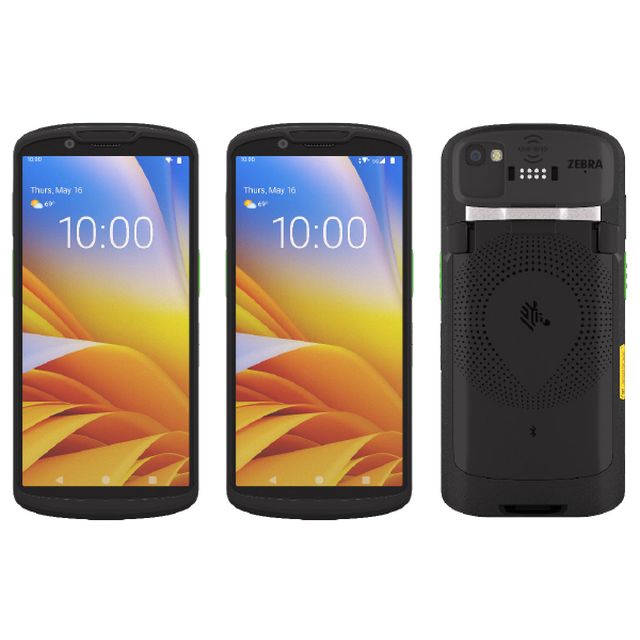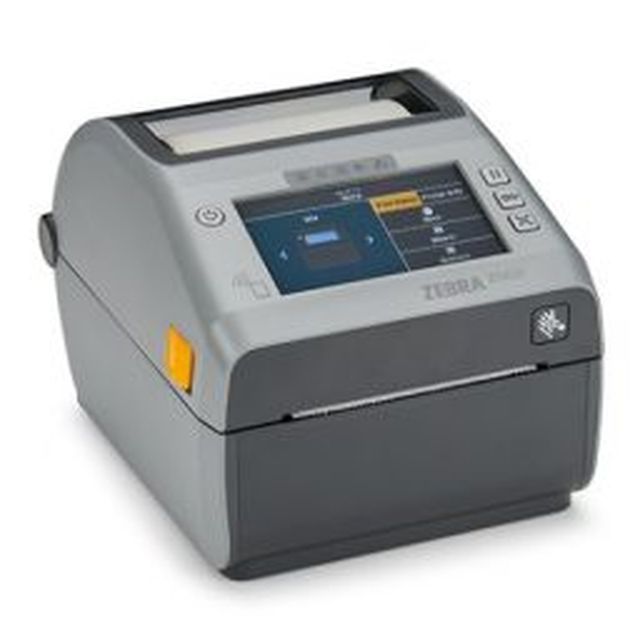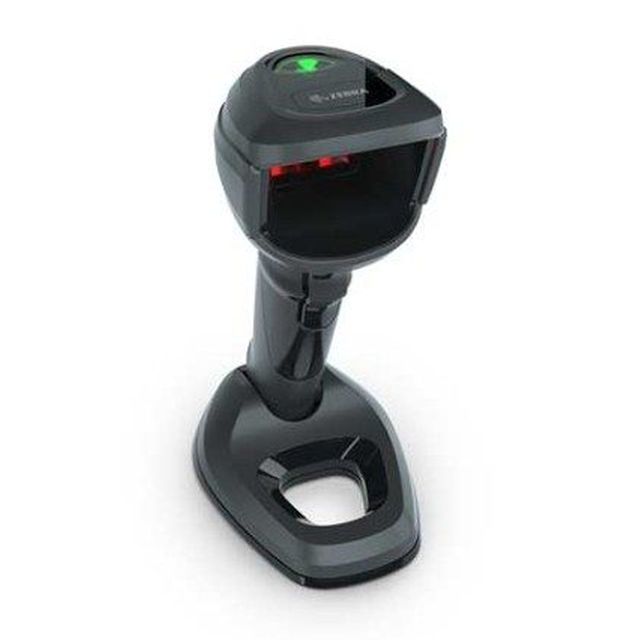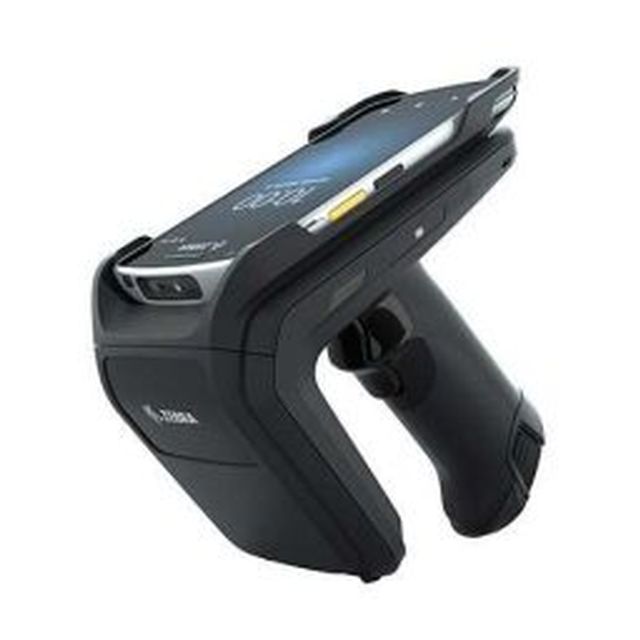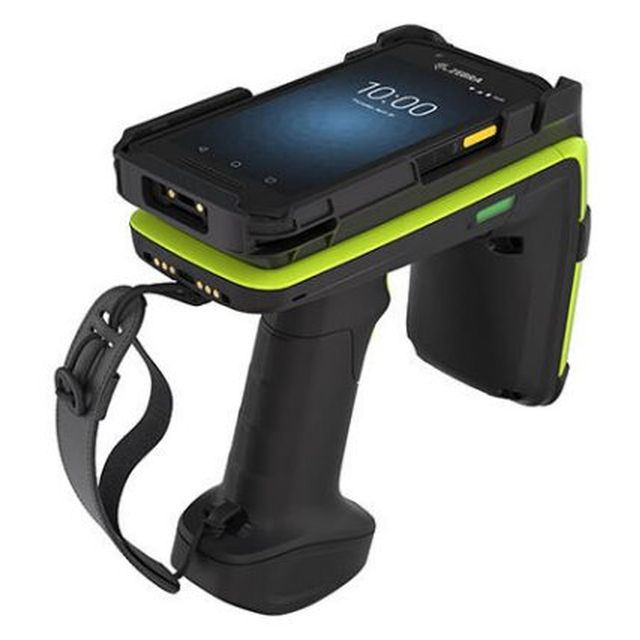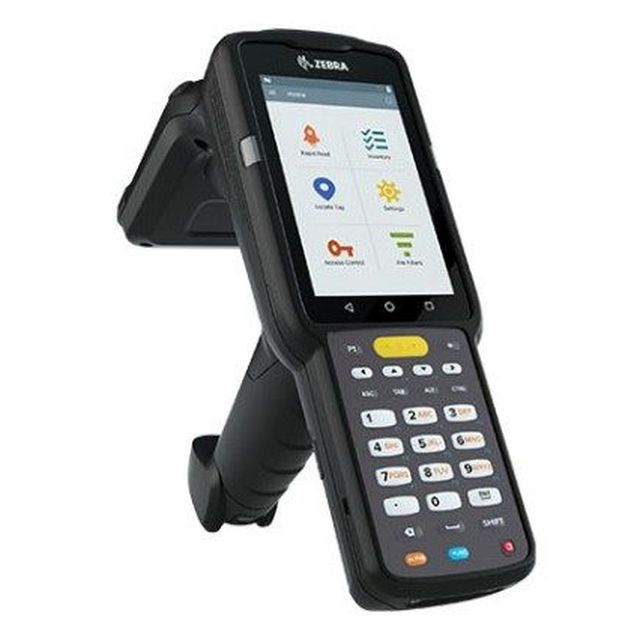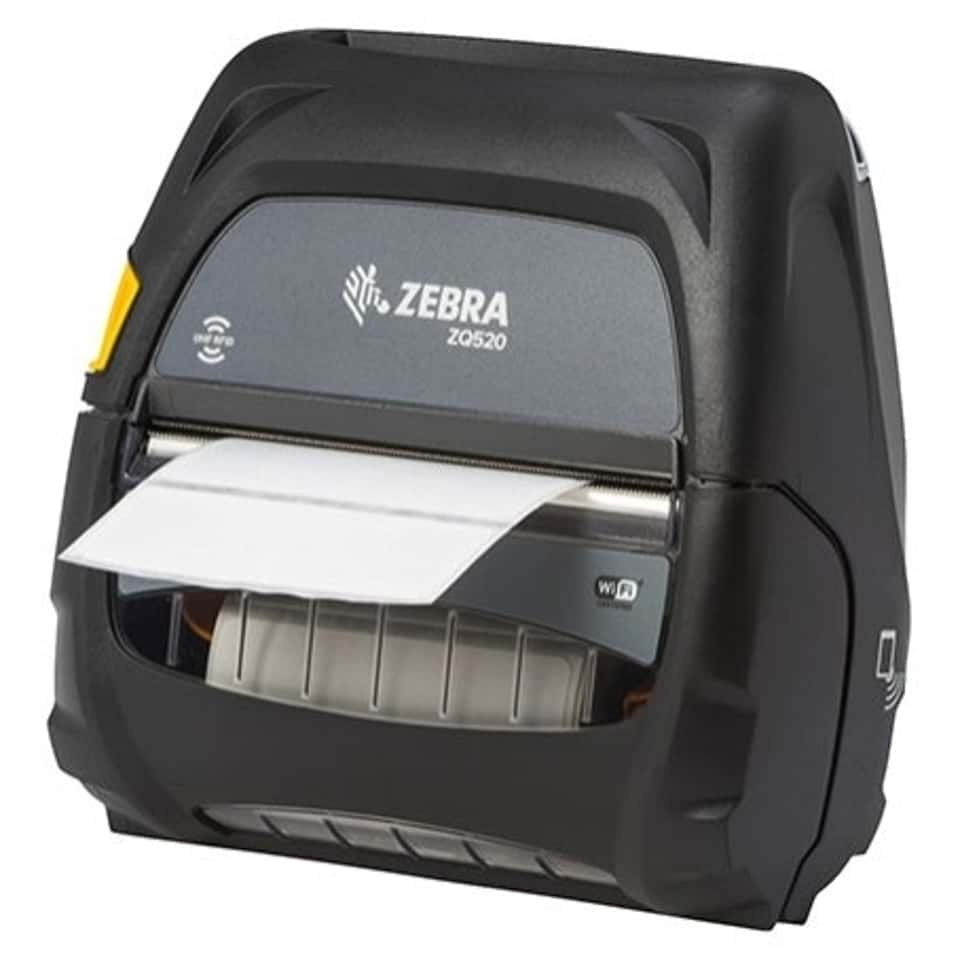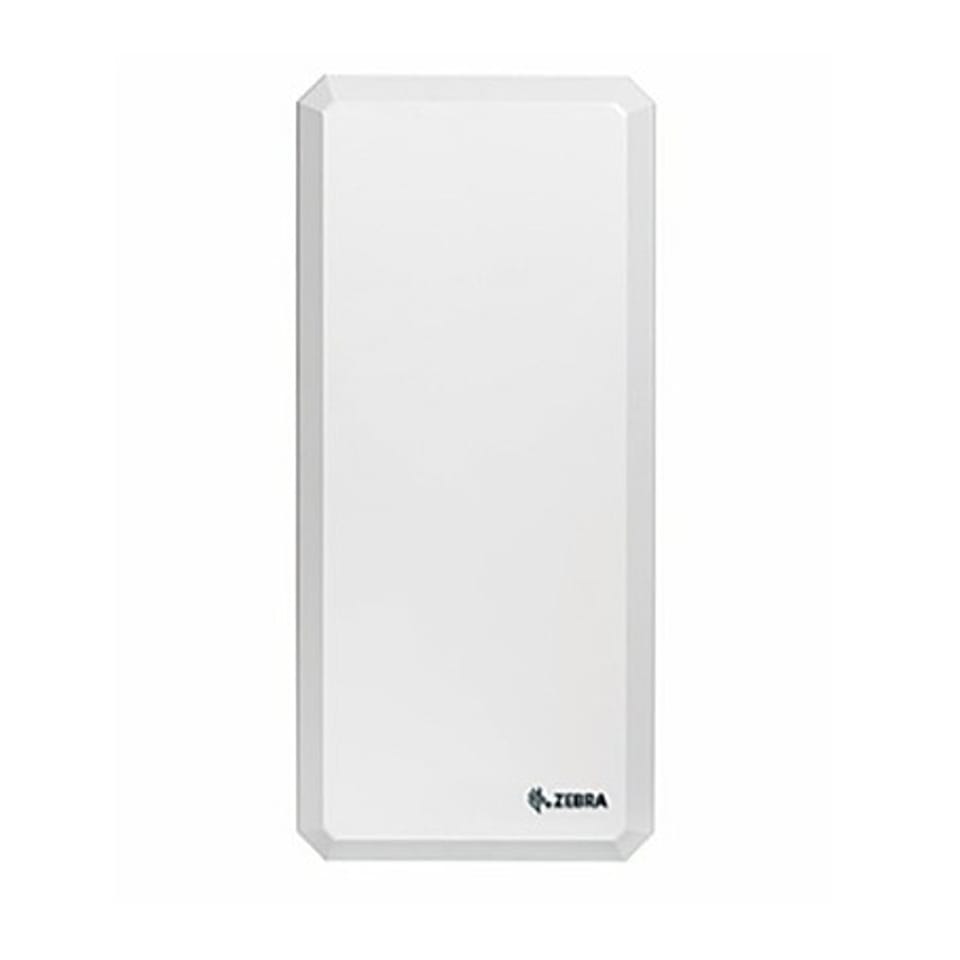Robot with Sophisticated Sensors, Cameras and WiFi on Board!
Pilot phases demonstrate inventory availability of over 95 %
Inventory inaccuracy costs retailers worldwide enormous sums of money every year. Customers are unable to find the goods they want and employees have to spend a lot of time constantly checking and correcting. The SmartSight solution detects shelf gaps almost in real time, checks price labels, analyzes the data and immediately provides specific correction instructions to management or directly to staff on the sales floor.
The result of numerous pilot phases shows inventory availabilities of over 95 percent. Zebra Technologies offers retailers complete automation systems consisting of hardware, software, cloud-based services and AI-based data analysis.
Mick Oliver, Director of EMEA Sales, SmartSight | EMA, Zebra Technologies and Alexander Honigmann, Sales Director Retail and Logistics Germany, Zebra Technologies, in an interview with RFID & Wireless IoT Global.
Smart Sight: Benefits of the Three-Fold Solution - Availabity of Goods | Managing Purchase Processes | Merchandise Presentation
Zebra Technologies conducts an annual survey of customer buying behavior and generates up-to-date information on strategies that influence purchasing behavior. The results of the "Zebra 2020 Shopper Study": 41 percent stated that the product they were looking for was sold out. For 32 percent, checkout lines were too long. 31 percent could not find the product they were looking for on display. "Zebra Technologies' SmartSight automation solution was designed with these three most frequently stated reasons in mind," emphasizes Mick Oliver.
You can find the full-length lecture by Mick Oliver on the topic of "Future vision for retail: robot technology, AI and machine learning" from February 17th at the Think WIOT Day "Knowledge for Retailers" here.
Mick Oliver Director of EMEA Sales, SmartSight | EMA, Zebra Technologies
"Reduce labor costs, increase inventory availability and omnichannel fulfillment directly from the store - all made possible with the SmartSight solution. The Retail Automation Solution is paving the way to the future in retail with robotics, AI and machine learning.“
The Supermarket as a Black Box
Increasing efficiency in the store and achieving price consistency – these are the goals of EMA50. Customers need to find the goods they are looking for quickly and easily. If, for example, products are advertised with the wrong price, this has a negative impact on customer satisfaction by the time they reach the checkout.
The SmartSight solution detects shelf gaps almost in real time, checks price labels, analyzes the data, and immediately passes on specific correction instructions to management or directly to staff. The result of numerous pilot phases: Shows inventory availabilities of over 95 percent.
Advanced Sensor Technology
The EMA50 robot is the central hardware in the SmartSight solution. The unit features sophisticated sensor technology to reduce staff workload and to ensure safe operation during opening hours. The solution is designed as a subscription and is based on how many stores the implementation is to take place in.
The service package includes delivery and integration of the EMA50, as well as the configuration and tuning of the system to the store. The setup of the Retail Automation Platform, all maintenance work and updates for the hardware and software, as well as the disposal of all components at the end of the lifecycle are included.
Interview with Alexander Honigmann and Mick Oliver
„We see extensive potential to optimize stationary retail with AI-based solutions. The highlight is the SmartSight Solution, which is made up of numerous precisely coordinated components," explains Alexander Honigmann.
“The Covid 19 pandemic has served as a catalyst to accelerate transformation processes. By the end of 2020, many retailers were at a point of evolution that many experts predicted would take three to five years," explains Mick Oliver.
How has the global Covid 19 pandemic affected the retail industry over the past 12 months? Has the industry benefited or rather suffered from the effects?
Mick Oliver:A clear dividing line must be drawn here between two retail sectors: The food market and the non-food market. Figuratively speaking, the stationary non-food sector came to a complete standstill in the spring of 2020. Retail came to a standstill virtually overnight. Customers were no longer allowed into stores, production was halted and global supply chains were massively restricted. The situation was quite different in the food retail sector: Despite lockdowns of varying degrees, only a few restrictions took place.
As a result, the food sector was also able to grow in 2020. A look at the retail sector as a whole makes it clear that digitization has been driven forward enormously. Like a catalyst, the Covid 19 pandemic helped accelerate transformation processes. By the end of 2020, many retailers had reached a point of further development that many experts had predicted would not happen for another three to five years.
Alexander Honigmann: In many places, the pandemic has prompted solutions as to how retailers can counter the store closures. Companies that had already implemented omnichannel solutions before the crisis were able to cushion sales losses more quickly. Those who had already networked their sales channels and were thus able to operate online were in a position to offer customers Click&Collect or Ship from Store.
Retailers who have had little contact with digital solutions so far have started to look into them as a result of their experiences over the course of the last year.
What are the general challenges facing the retail sector? How different are the effects on the various retail sectors?
Oliver: Once again, there is a dividing line between the retail areas already described, although there are also overlaps. Food retailing, like almost every retail sector, is confronted with increasingly rising labor costs. The pressure is growing to perform more tasks with the same number or even fewer employees. As a result, overall in-store efficiency is declining. Shelf gaps, incorrect price labeling or non-compliance with specified planograms can lead to customers leaving stores without completing sales because they are unable to find what they need.
Digital transformation has long since reached food retail. Global giants like Amazon have entered the online grocery business with great ambitions. In addition, there is the trend of ordering goods from the supermarket around the corner and having them delivered directly to your home. This has increased sharply during the avoidance of contact in the pandemic. For retailers, this change in customer behavior has two main consequences.
First, there must be a high level of inventory availability to map all online purchase requests. Second, employees must spend time assembling shopping carts with online orders directly from the store shelves. Without continuous inventory tracking of all goods on the shelves, online fulfillment directly from the store becomes nearly impossible.
Honigmann: These new requirements contribute to the risk of retailers losing sight of the basics. Ultimately, shelves must be filled for customers at all times. Shelf gaps are one of the greatest showstoppers in stationary retail. It is irrelevant whether food or clothing is being sold. As early adopters, numerous companies in the textile retail industry have already set the course before the pandemic. The importance of inventory accuracy in the store and the resulting options for onmichannel shopping were recognized early on.
This trend must also continue in the entire retail environment so that stationary retail can look to the future with confidence. A large proportion of customers still use a visit to a store not only to buy products, but also consider it fulfilling on other levels. Nevertheless, the share of e-commerce is growing continuously. Now is the time, with the right strategy and the right solutions, to continue to offer customers this option of shopping.
Zebra can look back on more than 50 years of innovation. What innovations will there be in the future?
Honigmann: Zebra started out as a hardware-only developer with the goal of creating technology that optimizes customer service offerings. This maxim still applies today and to all industries in which Zebra products are used – retail, logistics, industry – to name just a few. In the beginning, developments were strongly driven by innovation, but ergonomics and hardware features play an equally decisive role in product development. The change from a pure hardware developer and provider to a solution partner, has its origin in the change of handheld operating systems.
At Zebra, we recognized the emerging shift from Microsoft to Android very early on. We wanted to exploit the potential of this paradigm shift. This was the developstarting point for shifting the focus of development from hardware only to expanding the range of solutions. Task management or voice-over-IP solutions were among the first new developments to support employees in their mobile activities. These solutions can still be found in Zebra's portfolio today.
Oliver: Simply put, the introduction of smartphones more than ten years ago changed everything. Until then, mobile computing had been a very specific niche topic. Suddenly, it was possible to use concentrated computing power with easy-to-use interfaces – in both private and business environments.
What is Zebra's strategy for the future?
Oliver: Today, it is no longer enough to simply sell "only" hardware. Naturally, this does not mean that hardware becomes a secondary matter. We work hard to develop and produce the best possible hardware. This will continue to be the case. Any hardware company that does not build up a portfolio of solutions or cannot offer value-added services for readers, handhelds, printers or robots will sooner or later find it difficult to survive in the market.
Finding a dominant unique selling proposition that will continue to be the foundation of a company's success over the next 10 to 15 years is not easy. These are the reasons why Zebra positioned itself more broadly at an early stage. Today, for example, we can offer retailers complete automation systems consisting of hardware, software, cloud-based services and AI-based data analysis.
What role will AI applications play in retail?
Oliver: Artificial intelligence and machine learning are becoming essential factors in ensuring that solutions function at a high level of performance. The development of our SmartSight solution is a good example of this. Let's look back 20 months into the development of the EMA50 robot. One of the main challenges back then was to interpret what the robot saw on the shelf. Was it product A, B or C. Distinguishing between different packages was sometimes almost impossible. With the integration of machine learning, the robot is now able to detect and recognize countless products as they roll by. Without this form of AI, the solution would not be feasible.
Honigmann:The development of AI and machine learning is extremely fast. Today, no one can reliably answer the question of what potential can be leveraged in the most diverse application areas through the use of AI. As Mick Oliver already pointed out, we can realize solutions with AI today that were unimaginable just six months ago. The whole world is still in its infancy here. We can't say today what we will be able to know to solve specific requirements in the future. Technology will show us that.
With which AI-based solutions can retailers already achieve advantages in business processes today?
Honigmann: We see extensive potential for optimizing stationary retail with AI-based solutions. The highlight is the SmartSight Solution, which is made up of numerous precisely coordinated components. The solution is much more than just the – very high-profile – robot EMA50. SmartSight is the result of a combination of decades of hardware expertise specifically for the retail sector and the strategic acquisition of specialized companies.
The company acquisitions have enabled us, virtually from one day to the next, to implement solutions that would otherwise have taken many months of development work. One example is the 2019 acquisition of Cortexica, a company that has developed image processing-based analytics and AI solutions.
The goal: to increase operational efficiency. Features enabled by Cortexica's computer vision AI portfolio include object recognition, image and video analytics, and visual search. This was a perfect fit for the SmartSight concept. Integrating vision-based functionalities were key to making the solution truly intelligent.
Source: RFID & Wireless IoT Global 01-2021
Lecture by Mick Oliver at the Think WIOT Day "Retail & Logistics" 2021
The lectures from the Think WIOT Day "Knowledge for Retailers" on February 17th can be found here.







